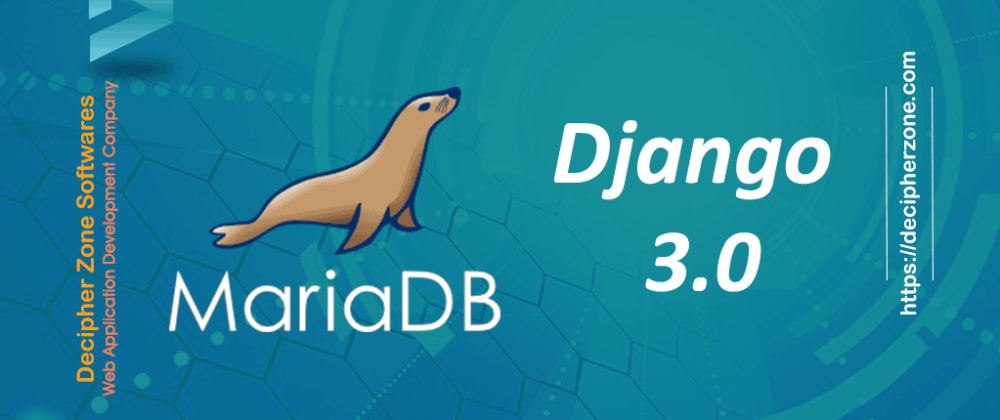What is Django? What's new in Django 3.0? The Python web framework Django released in version 3.0 with MariaDB and brings asynchronous processing thanks to ASGI.
Article Source: https://www.decipherzone.com/blog-detail/django-3
What is Django?
Django's open-source venture thinks back on a fourteen-year history, including Instagram, Mozilla, Bitbucket and the Washington Times. The framework, which has been under the administration of the Django Software Foundation since 2008, was initially made in 2003 on the news page of the day by day paper Lawrence Journal-World.
The framework, which owes its name to jazz guitarist Django Reinhardt, utilizes the MVC (Model View Controller) rule to partition the product into information model, introduction and program control. The creators talk in the FAQ of a changed structure, which comprises of model, format, and introduction and subsequently ought to really MTV for Model, Template View would have called.
Django Version 3.0 Released, What's New in Django 3.0?
The web framework Django created in Python has been discharged in adaptation 3.0. The most significant advancements are the presentation of offbeat capacities and an association with the open-source database MariaDB. What's more, designers can characterize specifications as substance determinations for content, whole number, and different fields. Django 3.0 is not normal for its processor Django 2.2 no LTS discharge.
Article Source: https://www.decipherzone.com/blog-detail/django-3
MariaDB is growing the scope of databases that the framework works with and keeps on comprising of PostgreSQL, Oracle, SQLite, and MySQL. The backend for the last is utilized to the interface from MariaDB, which began from a fork of MySQL. Django works with MariaDB from Django 10.1 onwards.
Asynchronous Process of Development
The most striking development is the presentation of nonconcurrent highlights: Starting with Django 3.0, Django can be run as an ASGI application (nonconcurrent server passage interface). The interface is viewed as the otherworldly successor to the Web Server Gateway Interface (WSGI), which determines an interface between Web frameworks, Web servers, and application servers in the Python environment.
Article Source: https://www.decipherzone.com/blog-detail/django-3
While WSGI is intended for synchronous web applications, ASGI can likewise be utilized for nonconcurrent applications and is intended to be as good as conceivable with the Web Server Gateway Interface. Django keeps on utilizing the great WSGI interface, however, it doesn't give nonconcurrent handling.
As per the Django blog, form 3.0 stamps just the start of the voyage, where the framework ought to be structured totally for asynchrony. For years to come, the Django group doesn't expect to cut the WSGI association, so engineers of synchronous web applications don't need to change to ASGI.
Flexibility of Development
Additionally new are the sorts TextChoices, IntegerChoices, and Choices, the designers' Field.choices define as a count as. The TextChoicesused for content fields that have a choice of pre-characterized character strings and IntegerChoices take various whole number qualities. With Choices, other field types can be listed.
Read: Top 10 Python Frameworks for Web Development for 2020
Further developments can be found in the discharge notes. Django 3.0 requires in any event Python 3.6. From Python 2.x, the web framework had just embraced two years prior. On the off chance that you would prefer not to manage without Python 3.5, you need to utilize the antecedent Django 2.2, which will get support as an LTS discharge until 2022. The following planned LTS variation is to be Django 3.2, which ought to show up in April 2021. This will likewise end the all-inclusive help of Django 3.0. Ordinary help runs until the arrival of Django 3.1, planned for August 2020.
Read: Top 10 Frameworks for Web Application Development
Article Source: https://www.decipherzone.com/blog-detail/django-3







Top comments (0)